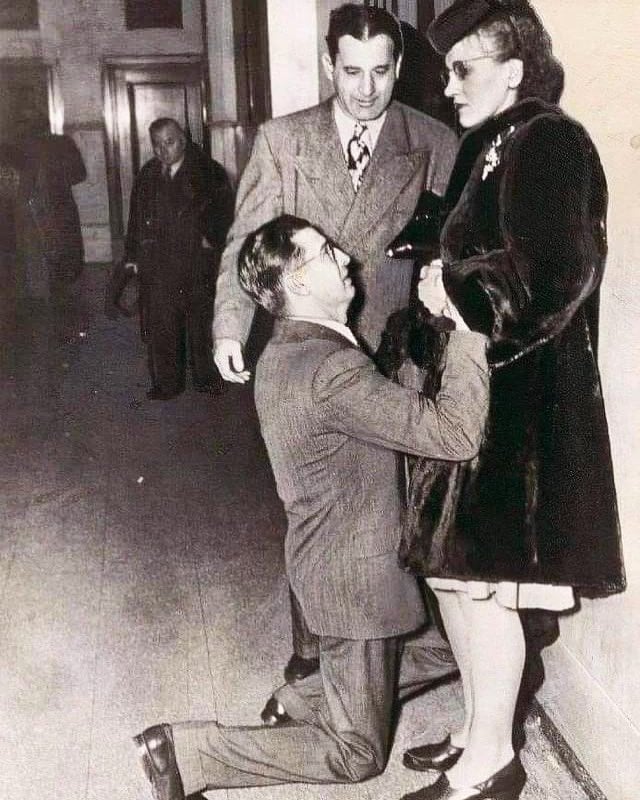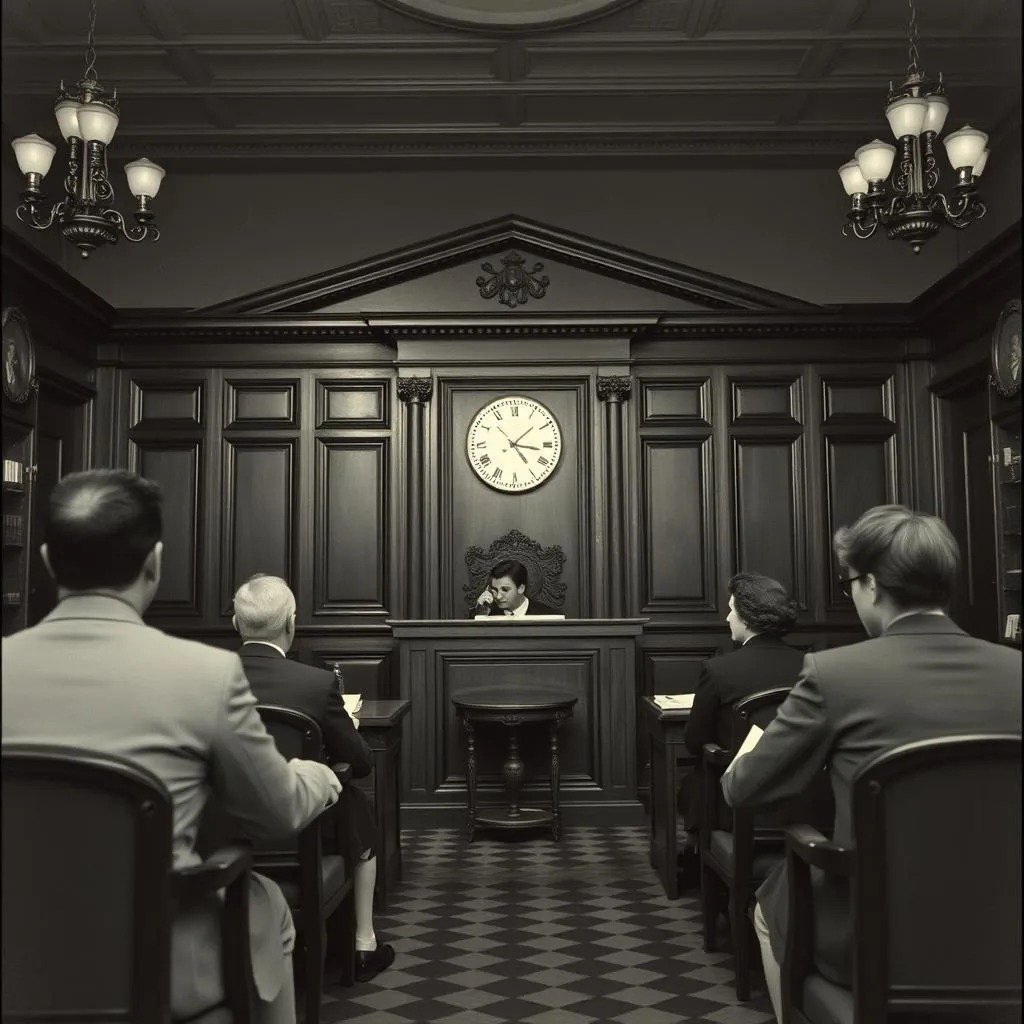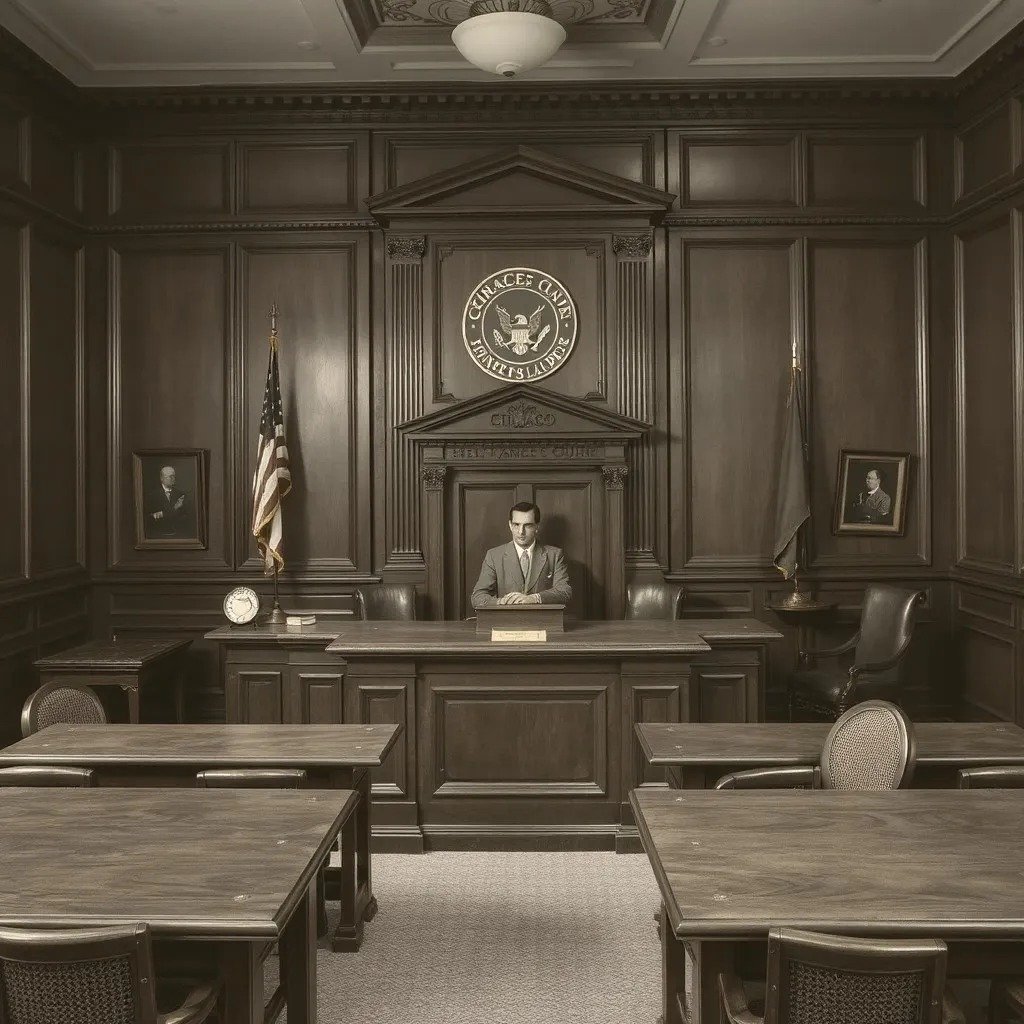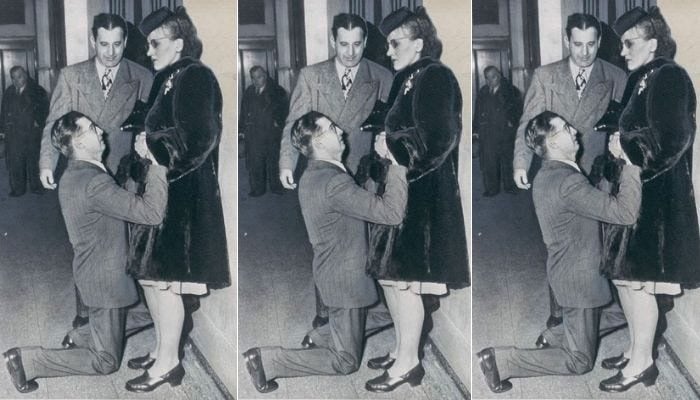Real Story Behind The Viral Photo Of A Man Begging His Wife For Forgiveness Outside A Chicago Divorce Court In 1948
In 1948, a black-and-white photograph captured the raw emotion of a man on his knees, begging for his wife’s forgiveness outside a Chicago divorce court.
Decades later, this image resurfaced, circulating across social media and sparking curiosity about the story behind it.
“It’s a powerful photo today because you can sort of imagine your own story behind it,” remarked Jeff Nichols, a Chicago historian who uncovered the tale behind the picture. Let’s delve into the events surrounding this iconic moment.
The making of the iconic photo
On that fateful day in 1948, Steve Strack found himself outside a Chicago divorce court, consumed by regret.
Kneeling on the sidewalk, his public display of repentance painted a vivid picture of a man who had realized, too late, the consequences of his actions. His wife, Anna, stood firm, her face reflecting the steely resolve that had led her to file for divorce.

This image, which historian Jeff Nichols uncovered, became viral decades after it was originally published in the Chicago Tribune.
According to Nichols, the photo was likely taken by a roving photographer looking for an emotional moment outside the courthouse. And they found it.
The contrast between Steve’s vulnerability and Anna’s steely resolve captures the final, heartbreaking moment of their marriage.
But what led to this dramatic scene? Anna had already decided to file for divorce, citing habitual drunkenness—a common reason for separation at the time.
Anna’s decision upon Steve’s action
Steve Strack’s public display of repentance was dramatic, but Anna Strack remained unconvinced. Her decision to seek a divorce had not come lightly.
Years of dealing with Steve’s habitual drunkenness had worn down her patience, and she had already resolved to move on. Even in that public, dramatic moment, Anna’s mind was made up.

Historian Jeff Nichols discovered through interviews and archival research that Anna’s tolerance had reached its limit. Steve’s struggles with alcoholism were the tipping point in their marriage.
In a time when divorce was heavily stigmatized—especially for women—Anna’s decision to leave was a bold and decisive one. She cited his alcoholism as the primary reason for their separation, a painful reality she had endured for years.
Anna’s determination reflected the growing independence of women in post-war America. While many might have expected her to reconsider after seeing Steve’s public act of contrition, it was too late. This display of desperation could not undo the years of damage.
The divorce context in 1940s America
Divorce in the 1940s was not a simple or private affair. Unlike today’s no-fault divorce laws, couples in Illinois were required to provide a legitimate reason for their separation.
Common causes included abandonment, cruelty, infidelity, or, as in the case of the Stracks, habitual drunkenness. This legal framework placed the burden on Anna to prove that Steve’s behavior had harmed their marriage, making the process public and often painful.

Judge Julius H. Miner, who oversaw their case, was known for his efforts to save struggling marriages. He believed in the sanctity of family and often used his courtroom as a form of therapy, encouraging couples to work through their issues.
Like many in post-World War II America, Miner saw the disruption of traditional gender roles during the war as a reason for the increasing divorce rates.
Despite his best efforts, Judge Miner could not save the Strack marriage. Anna’s determination and Steve’s documented struggles with alcoholism led to their inevitable divorce.
In fact, Nichols’ research revealed that Chicago had garnered a reputation for having relatively lenient divorce laws, making it the subject of regional jokes about how easy it was to end a marriage in the city.
Life of the two after divorce

Life for the Stracks continued beyond that day. According to the 1950 census, Anna Strack continued her life as a single mother, working at a gum factory and living with her parents.
She remained unmarried for the rest of her life, and though she legally separated from Steve, she was ultimately buried under his last name in 1983.
Steve Strack, on the other hand, remarried in 1953. Yet, he passed away in 1964, just over a decade later. The image of him begging for forgiveness outside the courthouse is one of the last public records of his life.
Meanwhile, Judge Miner’s influence went far beyond the Strack case. His traditional views on marriage and divorce gained him recognition, and in 1958, President Dwight Eisenhower appointed him to a federal judge position. From there, he continued to play a role in shaping family law across the U.S.

